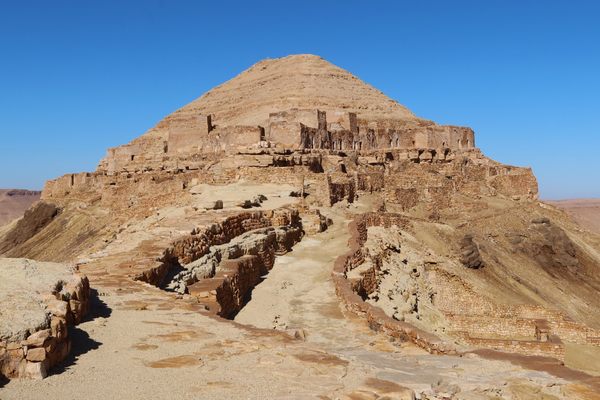Qasr al-Haj
A fortress-like granary that has been continually in use for more than nine centuries.
Berber architecture is probably one of the most evocative architectural styles in the world. The simplicity of the structures merge with the harsh landscape of the Sahara desert to create a timeless beauty. Some Berber structures in neighboring Tunisia became world-famous after George Lucas included them in his Star Wars movies.
The Qasr al-Haj is arguably the most stunning piece of Berber architecture in Libya. Other than its name suggests (literally translated: Fortress of al-Haj), the structure is neither a fortress nor a fortified village. The building is a storage facility, created to store the harvests of the semi-nomadic and partly settled people of the region.
It is a circular building, featureless from the outside, with a main gate that leads to the large courtyard inside. Surrounding the courtyard are 114 cave-like storage rooms, arranged in several levels. The lowest level, which partially lies underground, is used to store olive oil, while the upper levels are mainly used for barley and wheat. At the side of the main gate, a staircase leads to the top, where a walk completes a full circle around the top of the structure.
In a region of limited crops, granaries like this shelter the harvest from animals, thieves and weather extremes. The Qasr al-Haj was built in the 12th century by Sheikh Abu Jatla, who rented the storage rooms to several parties in exchange for a small amount of barley and wheat, which he then distributed among the poor.
Since the building is still in use, visitors are encouraged not to enter the storage rooms without the guidance of the caretaker or permission from the owners.
Know Before You Go
Qasr al-Haj, near Zintan, Jebel al-Gharbi District, Libya


















Follow us on Twitter to get the latest on the world's hidden wonders.
Like us on Facebook to get the latest on the world's hidden wonders.
Follow us on Twitter Like us on Facebook